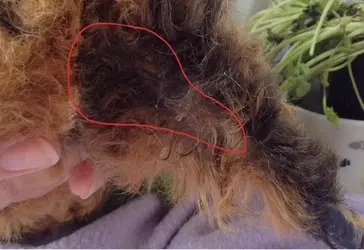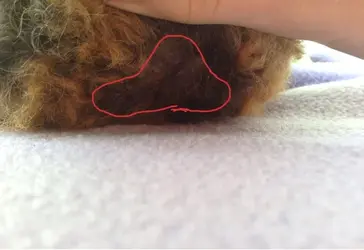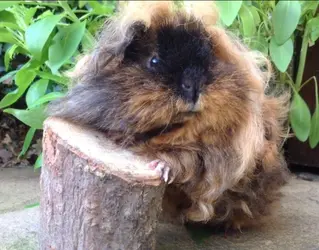Pigs rule
New Born Pup
- Joined
- Aug 29, 2016
- Messages
- 3
- Reaction score
- 2
- Points
- 45
Hello,
About a week ago I noticed a bald patch on my guineapig's rear end. It was about the size of a 2 pence coin. I cleaned it and initially suspected a urine scald as she does like to sit in her own urine. In the weeks leading up to the bald spot appearing, I did have to cut out a clump of hair (in the area of the bald spot) that had been completely covered in white powder (calcium) from her urine. However, the following day, after a trip to the doctors for myself, I was told I had ringworm and was given treatment for it. But it was when the doctor asked if I had any pets with ringworm I instantly thought that the bald patch on my Guinea pig could be ringworm. Once I had looked at the symptoms of ringworm on Guinea Lynx I began to treat it twice a day with Clotrimazole cream but it has not cleared up and it getting worse. I am aware that ringworm tends to get worse before it gets better ( because of the fungal spores) but it has been quite a while now with hardly any improvement. She does not have any other areas of ringworm on her and her cage mates don't have it.
In terms of her symptoms, she has a circular bald patch with areas of white crust on it. Around every other day (and when the area is washed) she gets small 'clumps' of hair that fall out. This hair is all attached together with a kind of thick crusty stuff, that is black/slightly green in colour, at the roots of her hair. She is not in any pain and allows me to touch it and apply the cream very easily. Here are some pictures of her suspected ringworm ( the red lines show the bald spot) :


I think the reason why the ringworm started on her rear end not her face is that she is an alpaca guineapig with extremely curly, dense hair so the air can't circulate to her skin very easily. I know that fungi like damp warm conditions and that is exactly what the conditions are like where the ringworm is. She is out in the fresh air everyday on the grass and their hutch is cleaned daily, making me think that a urine scald is highly unlikely.
However my question is do you think it is ringworm and, if so, what it the most effective way to treat it?
About a week ago I noticed a bald patch on my guineapig's rear end. It was about the size of a 2 pence coin. I cleaned it and initially suspected a urine scald as she does like to sit in her own urine. In the weeks leading up to the bald spot appearing, I did have to cut out a clump of hair (in the area of the bald spot) that had been completely covered in white powder (calcium) from her urine. However, the following day, after a trip to the doctors for myself, I was told I had ringworm and was given treatment for it. But it was when the doctor asked if I had any pets with ringworm I instantly thought that the bald patch on my Guinea pig could be ringworm. Once I had looked at the symptoms of ringworm on Guinea Lynx I began to treat it twice a day with Clotrimazole cream but it has not cleared up and it getting worse. I am aware that ringworm tends to get worse before it gets better ( because of the fungal spores) but it has been quite a while now with hardly any improvement. She does not have any other areas of ringworm on her and her cage mates don't have it.
In terms of her symptoms, she has a circular bald patch with areas of white crust on it. Around every other day (and when the area is washed) she gets small 'clumps' of hair that fall out. This hair is all attached together with a kind of thick crusty stuff, that is black/slightly green in colour, at the roots of her hair. She is not in any pain and allows me to touch it and apply the cream very easily. Here are some pictures of her suspected ringworm ( the red lines show the bald spot) :


I think the reason why the ringworm started on her rear end not her face is that she is an alpaca guineapig with extremely curly, dense hair so the air can't circulate to her skin very easily. I know that fungi like damp warm conditions and that is exactly what the conditions are like where the ringworm is. She is out in the fresh air everyday on the grass and their hutch is cleaned daily, making me think that a urine scald is highly unlikely.
However my question is do you think it is ringworm and, if so, what it the most effective way to treat it?

 That it would be best to take your beautiful girl to the vets for a proper diagnosis and the correct treatment. Hope she is soon back to full health.
That it would be best to take your beautiful girl to the vets for a proper diagnosis and the correct treatment. Hope she is soon back to full health.